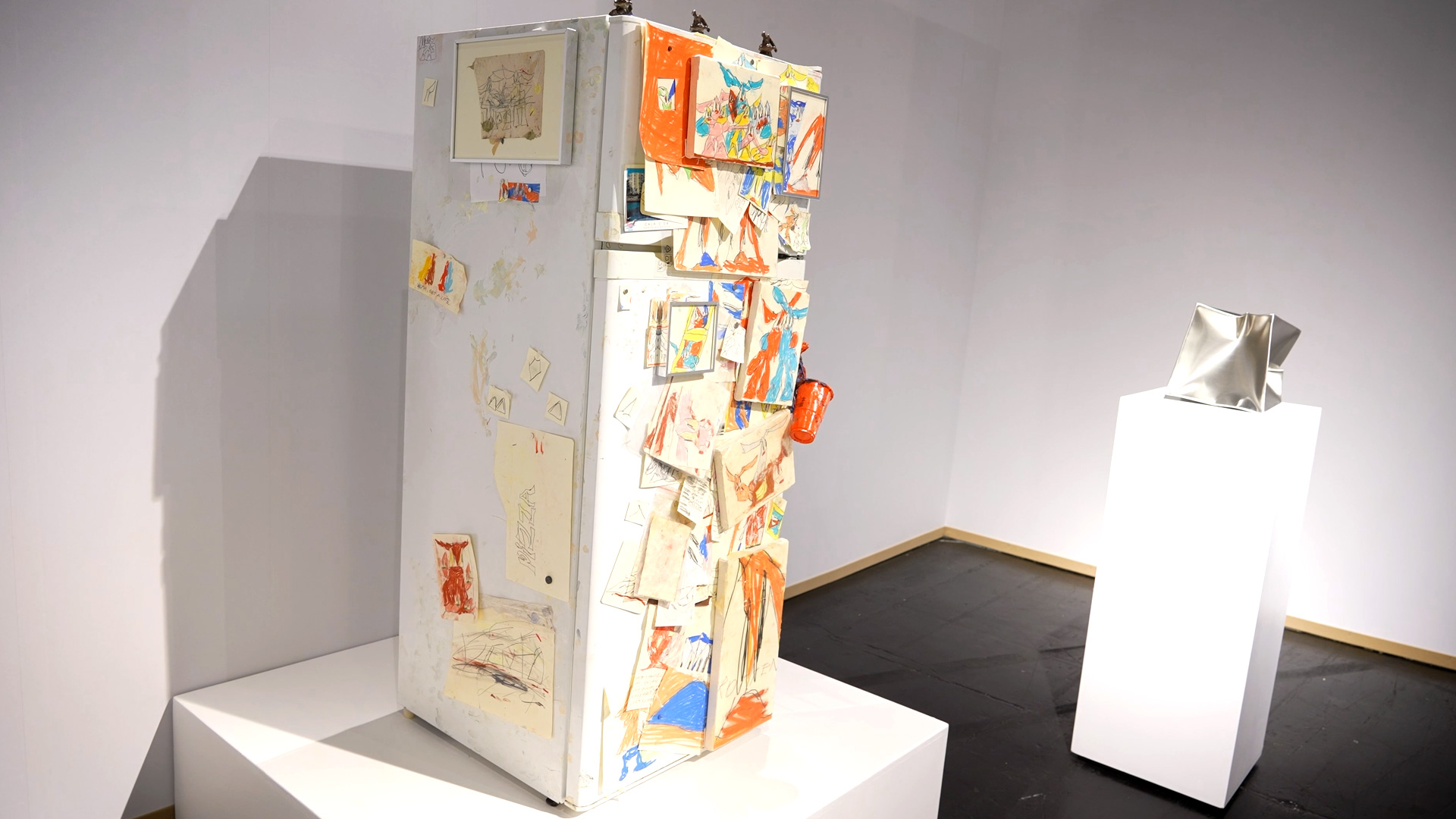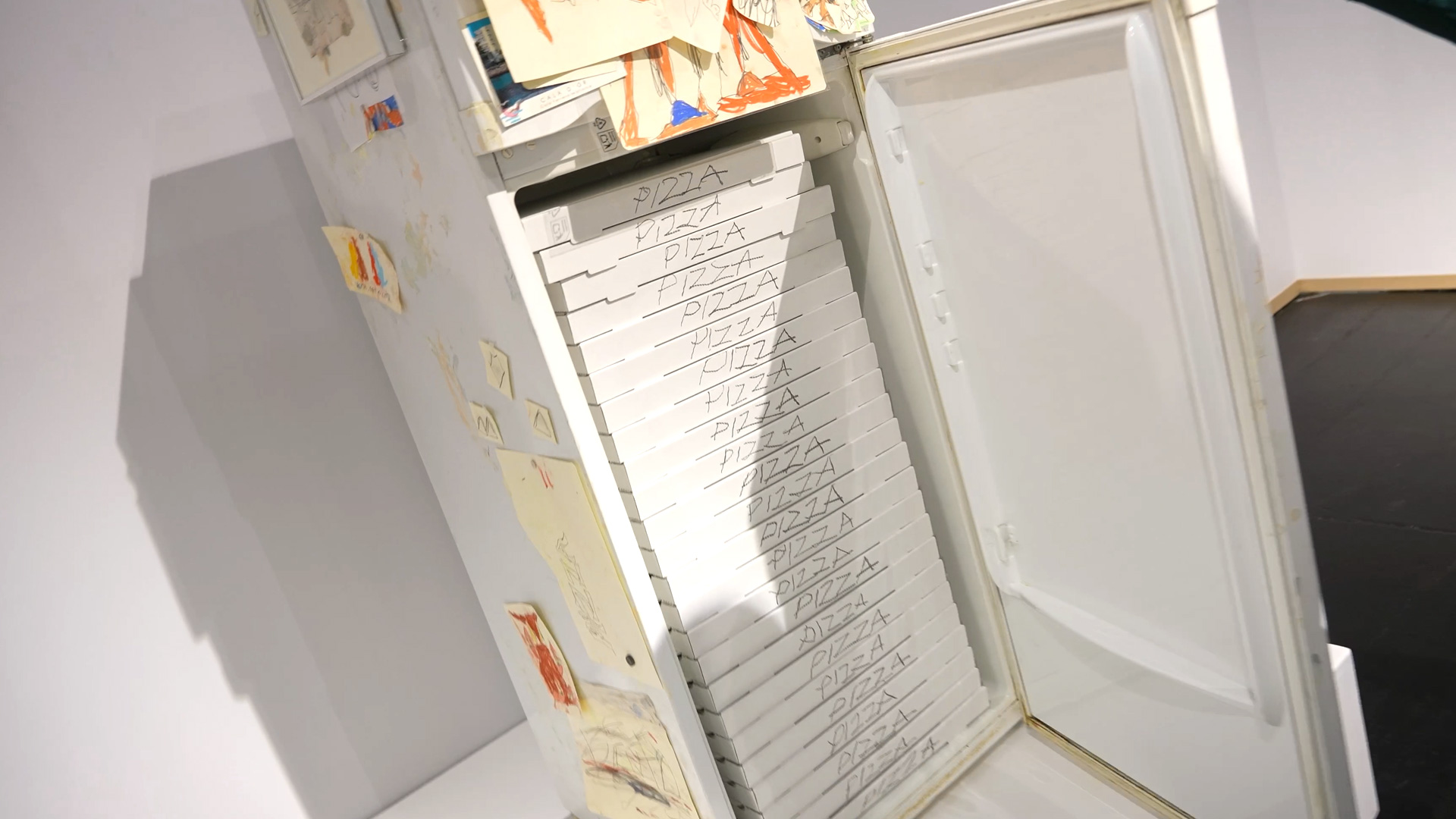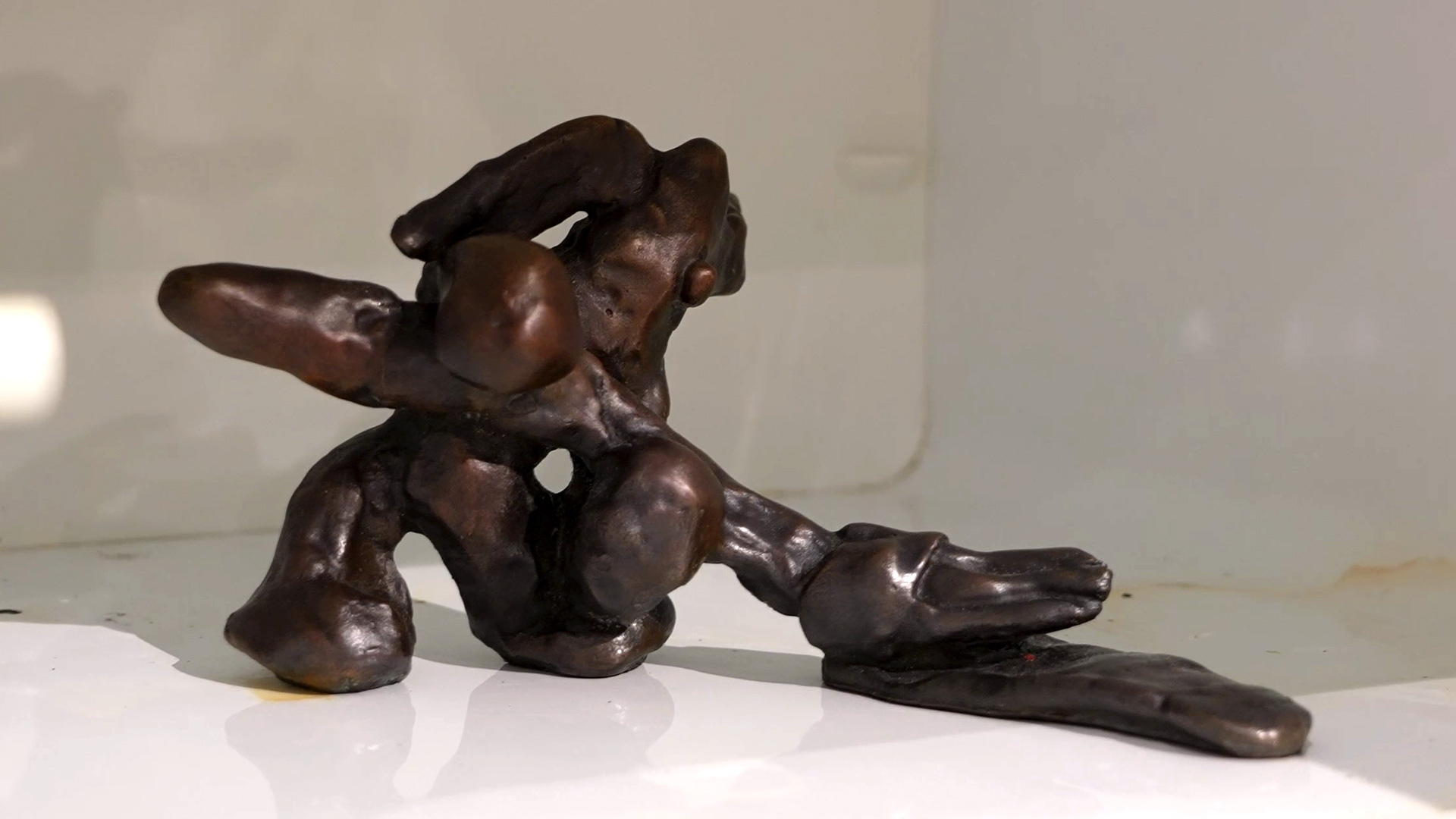Art Cologne 2025 is one of the most important platforms for contemporary art in Europe. The LA BIBI + REUS gallery is using this stage to present two extraordinary artistic positions: the Finnish duo Grönlund Nisunen and the artist couple Maite y Manuel from Uruguay. Both stand for an open, experimental approach to sculpture – for works that relate movement, perception, and material.
With this selection, LA BIBI + REUS aims to give new impetus to the Cologne art scene. The gallery wants to show how differently the medium of sculpture can be conceived today: as a physical object, as a process, and as a dialogue between art and everyday life.

The work of Maite y Manuel tells a story of change and meaning. The starting point is a refrigerator from their studio—an everyday appliance that was initially covered with drawings, notes, and shopping lists. Over time, the artists began to alter, modify, and paint the object, giving it a new role.
The result is an installation in which the refrigerator itself becomes a work of art. It stands at the center of a process in which function and symbolism intertwine. An object that originally embodied utility is transformed into an object of reflection—on habit, creativity, and the boundary between life and art.

Inside the refrigerator, a second, unexpected level is hidden: a collection of about thirty painted pizza boxes. This work level is both humorous and thoughtful—it recalls shared experiences, traces of time, the small remnants of everyday life that suddenly take on a new aesthetic.
For LA BIBI + REUS, the focus is on encounters—between artists, collectors, friends, and the community. Art should remain accessible, regardless of origin or budget. The gallery sees itself as a platform that facilitates exchange and transcends boundaries.


The presentation is complemented by the Finnish duo Grönlund Nisunen, whose works often make physical phenomena and movement visible. Their sculptures create precise, minimalist fields of tension between technology and perception—a calm contrast to the emotional, narrative depth of Maite y Manuel's works. Together, both positions show how differently contemporary sculpture can be understood: as a mirror of everyday life, as an experiment, or as a poetic transformation of the things that surround us.